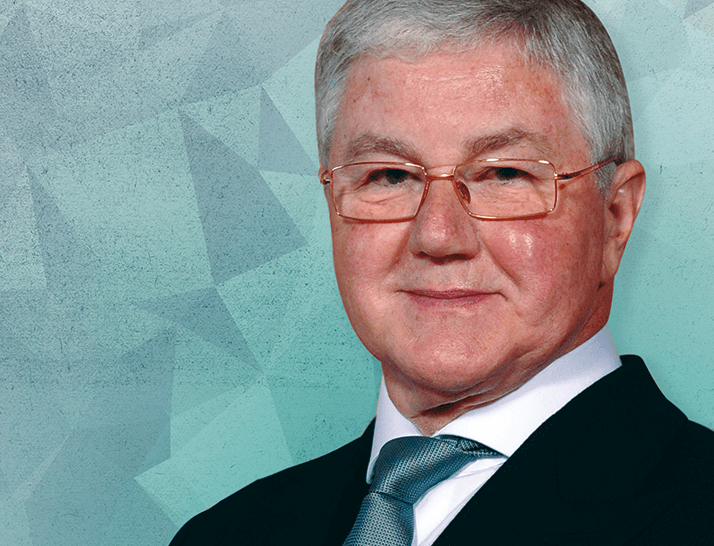
Probably my role in developing excimer lasers for refractive procedures. But I am concerned about how ubiquitous that development has been, and the potential effects it could have on biomechanics, so I’ve spent a lot of time recently looking at ways to further improve refractive surgery.
The innovation I would most like to be remembered for, however, is the work I’m currently doing in AMD, which I have termed retinal rejuvenation therapy. This uses a nanosecond laser pulse and a beam with a discontinuous energy distribution, causing the release of enzymes to clean up Bruch’s membrane, while preserving the overlying photoreceptor cells. The problem with treatments like anti-VEGF is that they target end-stage complications, not the underlying disease process. I think that retinal rejuvenation therapy, which is currently undergoing clinical trials, could ultimately be used as a prophylactic, delaying the high-risk factors of aging in the outer retina to the extent that life expectancy would not allow onset of visual symptoms. So I guess I will be remembered for a mix between retina and cornea, but I suspect I’ll be remembered most for my corneal contributions.
As I’ve grown older, the bureaucracy of universities and health systems has hugely proliferated. You could spend an enormous amount of time just dealing with these pressures. The way forward is to determine what ideas are going to be a commercial success and get them out of the system as quickly as possible, so you can spend your time on R&D, not fighting pointless exercises with bureaucrats. My advice is to spend as little time as possible dealing with committees, sitting negotiating things which, in a few months, are going to change anyway.
My PhD tutor, Kit Pedler (who actually invented the Cybermen on the UK television show Doctor Who), was a great lateral thinker, and he told me “the sign of a good scientist is to see what everybody has seen, but think what nobody has thought.” And I have always gone to interfaces, because you can beaver away in a lab, and you’ve suddenly lost 25 years and gotten absolutely nowhere. But look at boundaries, look at other technologies than your own, look at what could have impact. For example with the excimer laser, I was looking at the use of those systems in the print industry, for producing circuit boards for microelectronics. And I thought, wow, if they could cut with that degree of accuracy in the eye, it would be a revolution!
I came into lasers shortly after their advent, and originally I was employed by the Royal Air Force, to determine their safety. As a consequence, I sat on virtually every one of the world’s laser safety committees, and was involved in drafting many safety documents. This meant I was able to answer most of their questions. And most of my clinical colleagues are happy about this, because they know I can provide sensible answers.
The International Committee of the Red Cross was getting very concerned about incidents with military lasers used specifically to blind people. I had worked on the safety data and was a little bit horrified to see it being used in this way. To me, it was a labor of love, standing up there and postulating that it was totally unethical to design weapons that were organ specific. And we managed to get a Geneva Convention banning anti-personnel systems. The problem is that in the modern battlefield, many of the laser systems (such as target illuminators) are eye hazards, and we knew we wouldn’t be able to get rid of those. But at least we stopped things like the clip-on emerald laser for the M16 rifle – which meant that when you run out of bullets, you start blinding people. We got rid of those.
Well first of all I should explain that I was an emmetrope all my life until I became presbyopic, and right now, I haven’t seen any have refractive surgery that I would undergo – I‘m not going to punish the cornea for the crime of the lens.
If I were up to a minus five myope and I was a swimmer or a tennis player or whatever, there’s no question I would have had refractive surgery. If I was a plus five I would look at things very carefully, and I might consider LASIK extra, i.e., LASIK followed by cross-linking, which has impressive results for hyperopia. I would not have a hyperopic correction without immediate CXL to “lock in” the results.
Personalized medicine and molecular biology. We’ve seen advances in gene diagnostics, and now we’re beginning to enter the era of genetically based treatment. I think that excites me more than anything else. That’s where I would train today.
